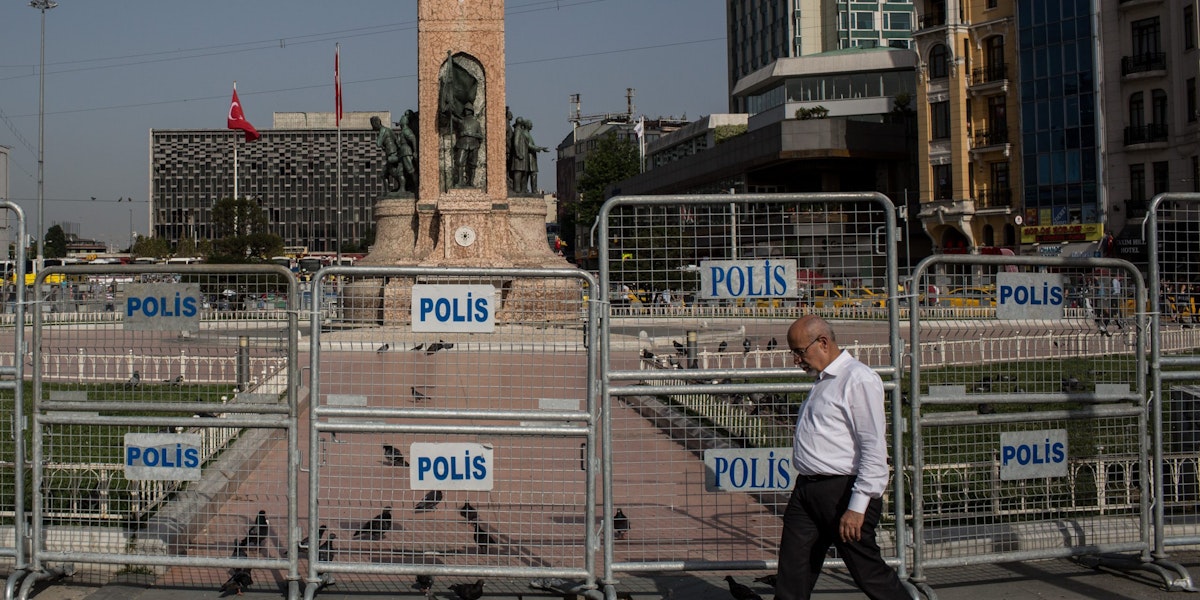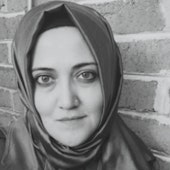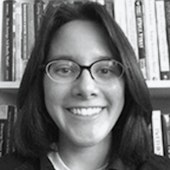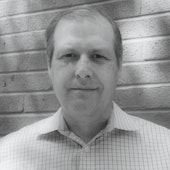Police forces are a popular research subject in anthropology, sociology, and other related disciplines. Using participant observation—the methodology of ethnography—scholars have sought to understand the motives, mores, cultural practices, and identities of police officers.
But what if traditional ethnographic techniques are not enough to understand the institution of the police, in its totality? Three academics in this roundtable who have used ethnographic techniques to study the police—two in the United States, and one in Turkey—argue that it is no longer adequate to research the police at the level of the station or the squad car. While there is value to this work, these researchers argue that it is limited, and can miss the full range of sites and actors that policing involves, including connections across jurisdictions and international borders. Instead, ethnographies of the police need to explore the cultural and political context of policing. Research should also expand the pool of subjects it considers, and acknowledge the different perspectives that the choice of subjects can offer—depending, for example, on whether those subjects are low-ranking officers, decision-makers, or people or institutions affected by policing. Each research relationship has its own entanglements and methodological and ethical challenges.
Researching the police from multiple angles shows that security regimes are global and that the distinction between domestic and foreign policy is not always clear. The definition of a potential threat to national security should not be taken for granted; nor should overtures about friendlier policing be taken at face value. A broader ethnography of the police also reveals how approaches to policing have become transnational, especially since 9/11, and have penetrated into new corners of daily life.
The discussions in this roundtable represent the views of the participants and do not necessarily reflect the positions of The Century Foundation.
Hayal Akarsu: We may think of police as differing greatly according to jurisdiction, but I’ve found through my fieldwork—and through my personal experience–that there are a lot of similarities and connections between police around the world. In fact, in many cases they actually work together, especially in trainings.
During my fieldwork in Ankara in 2015, I attended a training at the Turkish National Police Academy. The training was offered by U.S. Drug Enforcement Administration officers. They drew on their operations in Nogales on the U.S.–Mexico border to share examples of best practices with trainees from Turkey, Afghanistan, and Somalia. One week later, I observed a use-of-force training given by an office of Frontex (the European Border and Coast Guard Agency) to the Turkish National Police Force. These were just a few of many gatherings I participated in during eighteen months of fieldwork studying the implementation of European Union-inspired police reforms in Turkey.
I was struck by the extent of the entanglement of Turkish police with global networks of security, policing, and reform. I would often hear a motto repeated in these meetings: “Since criminals do not recognize borders, we [the police] are part of one big family.” The “fictive kinship”—as anthropologists call it—among the police transcends borders. This has been especially true since 9/11.
“The bigger picture of researching the police goes beyond observing the officers in uniforms.”
Tracing the networks of policing across different scales and sites bucks the tendency of researchers to limit their inquiries on police to particular, well-known sites. Ethnographers of police have long located themselves, for instance, in the backseat of police cars, accompanying police while on patrol and interacting with civilians, or in police stations. And in fact, I also spent several months conducting my research out of a police station. Although such methods provide valuable insights about the way police power operates in a society, limiting research to these sites prevents one from observing the plurality of sites and actors (policymakers, international experts, bureaucrats, human rights practitioners) in the making of security and policing policies. The bigger picture of researching the police goes beyond observing the officers in uniforms—and it even goes beyond the limits of the territories where a particular police institution has the so-called right to use force.
Deputizing Civilians
Nicole Nguyen: Your description of the global carceral circuits, the deeply embodied work of policing, and the plurality of sites and actors contributing to security regimes resonates with my own research in the United States. My recent fieldwork followed fast-moving national security policies that have given police more access to communities through new partnerships. There is a sports center in Minneapolis, for example, that offered free membership passes to Somali children and also gifted them with guest passes so they could begin to build social network maps to identify potential nodes of terrorist activity. In this case, the athletics director collected the information and shared it with law enforcement—which is emblematic of how policing institutions have further enlisted community members and social service providers as proxy national security agents. The athletics center served as a site of surveillance, providing a steady flow of intelligence to the FBI, the Department of Homeland Security (DHS), and local law enforcement officers.
At the same time, in Somalia, the U.S. State Department trained specialized Joint Investigative Teams within the Somali Police Force to build Somalia’s “counterterrorism capacity.” These policing arrangements illustrate how the demarcations between domestic and foreign policy make little sense in a world order defined by the U.S. empire; instead, they reveal the circulations of racialized policing logics, practices, and discourses that sustain and expand imperial formations.
Hayal: Relatedly, the rhetoric of “winning hearts and minds” has been employed by diverse security actors at multiple scales. Nicole, your discussion reminds me how some of the police reform projects I observed in the field have ended up turning some civilians into deputies of the police or, as you put it, proxy national security agents. As part of my research, for instance, I looked at several police-led social projects focused on “potential risks” embedded in citizens’ “social environment.” In these “proactive policing” projects, the Turkish police have worked with school teachers, local shop owners, religious leaders, social workers, and even football coaches, who have directed recreational activities so that police and civilians can socialize. Such projects were supposed to teach civilians how to police themselves and their social surroundings against “potential security threats.” But, most of the time, residents of neighborhoods where I conducted research reused these discourses to criminalize or discriminate against the people that they envision as threatening the “quality of life” in their city, neighborhood, or school. These civilians were not only mirroring national security priorities in everyday life, but also their own racial and class anxieties against “suspect Others”—who were mostly racialized, gendered, and classed. It’s a good example of how crucial it is to research how policing discourses make inroads into everyday life, and are picked up by diverse social agents and put into different uses.
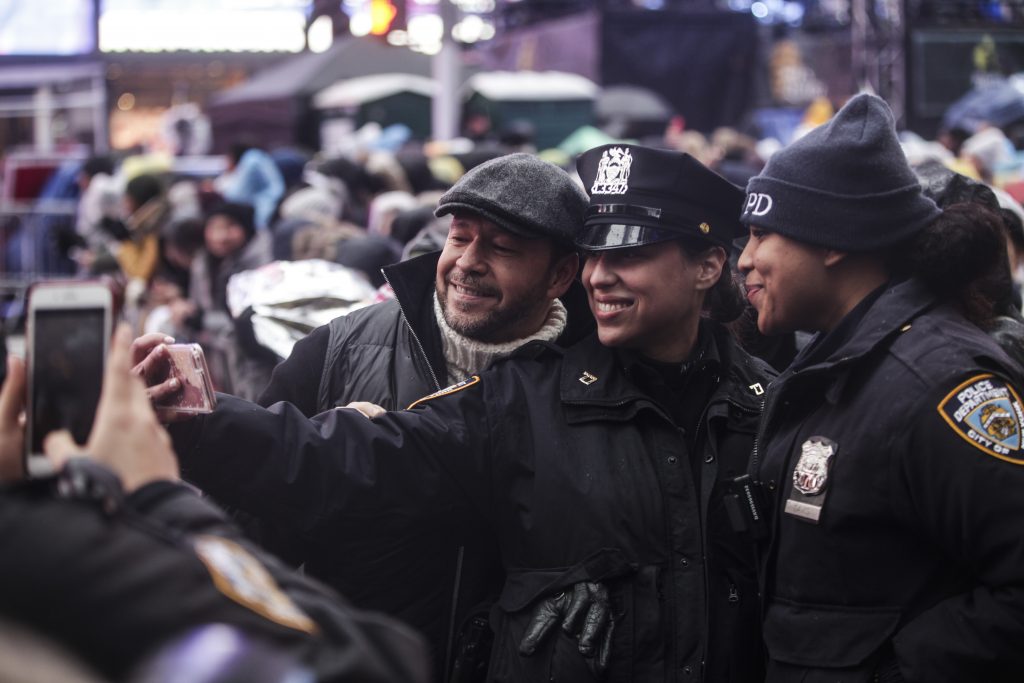
Nicole: I’m currently following a community campaign in Los Angeles known as #RejectTVTP. #RejectTVTP has called on city council members to reject a 2021 Targeted Violence and Terrorism Prevention (TVTP) grant awarded to the Los Angeles Police Department (LAPD) by the Department of Homeland Security. The grant would train police officers, school and university personnel, clergy, and mental health clinicians to identify individuals vulnerable to or in the process of terrorist radicalization, using checklists of warning signs or concerning behaviors. More specifically, the grant would fund a program called Providing Alternatives to Hinder Violent Extremism (PATHE), which is housed in the LAPD’s Mental Health Unit—a collaborative office shared by police officers, area detectives, and clinicians who receive referrals from law enforcement, community members, and service providers.
PATHE facilitates the process of assessing, identifying, and managing “behaviors of individuals encountered by law enforcement and civilians alike who express an extremist ideology, coupled with mental illness, from a course or pathway that historically resulted in violence.” The warning signs used to identify individuals who are arguably vulnerable to terrorist radicalization, however, explicitly target expressions of Islamic faith, such as growing a beard, praying five times a day, or traveling to a Muslim country. Other warning signs are so vague that they only raise suspicion when exhibited by Muslim, Arab, and other racialized communities—marital problems, financial strain, sporadic work history, mental health struggles, and experiences with bullying and discrimination. In other words, PATHE casts suspicion on and even criminalizes the everyday behaviors of Muslims in the United States.
While programs like PATHE clearly increase contact between law enforcement and communities through the provision of social services, they also appear to be a friendlier alternative to more conventional counterterrorism tactics targeting Muslim communities, like the infiltration of mosques, blanket surveillance, and watchlists. But extensive social science research has shown how programs like PATHE actually expand the reach of those counterterrorism tactics by facilitating information-sharing, increasing police access to community spaces, and mobilizing mental health care clinicians as proxy national security agents.
These new policing arrangements affect both mental health professionals and Muslim clients: Muslims, for example, have reported that they are less likely to seek care or divulge information in a clinical setting, in fear that what they say—or even the process of seeking care itself—could be used as a pretext to open a criminal case against them or place them on a watchlist. Clinicians, for their part, have reported that they do not feel comfortable fully exploring clients’ needs, in the fear that they could disclose information that qualifies as an early warning sign of terrorist radicalization, such as some of the commonplace issues described above. Clinicians have also reported how programs like PATHE jeopardize the ethical standards on which their profession depends, such as confidentiality and informed consent.
Securitization of Daily Life
Hayal: “Going to the citizen’s door” was an expression I often heard during my fieldwork with the community-policing units in Istanbul and Ankara. The expression is used colloquially in many everyday situations that do not involve the police, mainly to articulate that someone has taken the trouble to go all the way to someone else’s door, either out of respect for them or a desire to deliver a convenient service to them, or both. The expanded use of the phrase “going to the citizen’s door” in the context of the police is important for several reasons. It stands in contrast to another common expression, “devlet kapısı” (the “state door” or the “gate of the state”), which is used to refer to governmental offices and state institutions. The phrase connotes a fortress-like, closed structure that is difficult to enter and definitely not welcoming. What has been changing, then, is that the state, via the police, is coming to one’s door instead of calling one to be in its presence. It connotes a courtesy extended, or a favor offered.
“My ethnography reveals not only that police practices in Turkey have created security implications for social life, but also that they have turned ordinary people into agents of security.”
In January 2016, for instance, I accompanied three police officers—one woman and two men—and a female social worker, on their visits to more than sixty households in Ankara. In these visits, officers intended to interview neighborhood residents. This particular program’s goal was to identify possible security risks in residents’ homes and neighborhoods. What struck me during these visits was that the team members relied mostly on their sensorial impressions to gather knowledge during each visit. They took note of tensions they observed between family members, the arrangements of furniture, posters on the wall, the tidiness of the house, and even what they smelled. All of this became data for the police in detecting potential security risks.
With the advent of such community policing practices, the police no longer understood security in the narrow framework of “national security” (meaning, the security of the state). Instead, police saw social processes, kinship networks, and neighborhood environments as sources of security (and insecurity). I understand this phenomenon as securitization—the process by which certain issues are constructed as matters of threat and security by the state.
My ethnography reveals not only that these practices have created security implications for social life, but also that they have turned ordinary people into agents of security by fostering intimate contact and collaboration with the police. In “harmony meetings” (police-community forums) I attended, for instance, there was an enthusiastic demand for harsher policing of suspect Others, such as Syrian refugees, the urban poor, or political dissidents. I was also struck by the popular support for the police: people lining up to take selfies with the police or submitting reports on “online informing” apps.
Having police as “social workers with guns,” who inquire about people’s needs and wants and chat with citizens in their living rooms, might paint a friendly portrait of the police for some. But it also means the expansion of policing into more areas of everyday life. Moreover, the involvement of communities in policing does not necessarily result in “less policing.” Indeed, communities can also work as ancillary police power.
Alex, how has your research informed your understanding of the operation of policing at the street level?
Learn More About Century International
Perspectives of the Policed
Alex Vitale: I started systematically observing policing more than thirty years ago while working at the San Francisco Coalition on Homelessness. Because my work began as a housing and social services policy advocate, rather than a police researcher, I understood policing as just one part of government that could be mobilized to address community concerns. That gave me a level of independence from policing and greater awareness of the other possible ways that cities might address social problems like homelessness, harmful drug use, and mental health crises.
In the early 1990s, the City of San Francisco had largely given up on housing its growing homeless population and turned instead to criminalizing their public behavior. The city justified this with a discourse of improving the city’s “quality of life.” In response, I created a project called Streetwatch that trained volunteers to directly observe police behavior toward unhoused people, and to speak to these people about their experiences with the police. The goal was to identify police practices that were unlawful or unjust, in the hopes of limiting their ability to push people out of public view. In many ways this was ethnographic research about policing, but it differed greatly from most such research in that it took the perspective of those directly affected by policing. Most research on policing starts from the standpoint of police: attending trainings, performing ride-alongs, attending community meetings. It was this street-based perspective that helped shape my critical views about policing.
Over time, I also participated in training, ride-alongs, and community meetings. I also observed police leaders engage in planning and communications strategy. This allowed me to more fully understand how police saw themselves and the structural frames that shaped their actions, such as legal frames, political imperatives, and the seeking of legitimacy.
Nicole: As part of my ethnography, I spent a year in 2012–13 at a high school with a specialized homeland security program to train poor and working-class youth as the next generation of low-level security workers. In the program, I participated in several national security and police trainings. On one field trip, we went to the state police academy, where the students and I had a chance to undergo some parts of the police cadet program. In one exercise, students and I were given training weapons (essentially, inert guns) to use in a simulation of raiding and clearing a house. My role was to play a robbery suspect, hidden in a cardboard box stored on top of a tall pantry. If found, I was to “shoot” the students. Like other simulations, I found myself swept up in the process, and tried hard to “win.” Even if I disagreed with the police, I often found myself getting involved in the high-intensity, high-adrenaline activities—I was excited and engaged, and thankful for a break from the drudgery of the school day. I could see what attracted students to the program and why teachers viewed it as an effective way to prepare students for future jobs.
My role was to play a robbery suspect, hidden in a cardboard box. If found, I was to ‘shoot’ the students. I found myself swept up in the process, and tried hard to ‘win.'”
In other words, the relationship between policing and violence was difficult to discern in these moments, even if so obvious (I was, after all, running around with an inert weapon and trying to “shoot” unsuspecting students). I don’t think I came to empathize with the police in these moments. I did, however, come to understand the perspectives of students and teachers and the lure of the homeland security studies program. Of course, I was studying security regimes by way of their training, so I was one step removed from the daily work of practitioners.
Hayal, in your own fieldwork, did you experience such moments where you found yourself drawn in by police logic or, at least, sympathetic to police officers? I am curious because these moments seem especially instructive to understanding not only policing, but also how we understand and might slip into policing practices ourselves.
Hayal: Indeed, nowadays most security and policing practices target our emotions (fear, anxiety, and trust, for example). Community policing projects I observed in Turkey were all about putting the “smiling face” of the police upfront, with slogans like, “We care for you.” Police were promoting dialogues with citizens through town hall meetings, called “harmony meetings.” These were presented as an antidote to Turkey’s heavy-handed policing tradition. As someone who grew up in Turkey in the 1990s against the massive backdrop of state and police violence (torture, forced disappearances, extrajudicial killings), it was hard to not be taken in by these new efforts to create policing with a smiling face. At times, these seemingly less-violent forms of policing appeared a better alternative, especially for me, as a middle-class Turkish citizen with certain privileges. There is also something very insidious about such policing projects, which claim that they want to make your neighborhood “safe.” Who doesn’t want a safer neighborhood? The more I researched, however, I observed how the discourse of “safety” works as a technology of Othering. In a way, community policing in Turkey has instead strengthened the police’s grip on social life in a less heavy-handed but still pervasive way.
There were several bombings that happened in Istanbul and Ankara during the course of my research—I even missed one of them by five minutes. Meanwhile, I had some interactions with my police interlocutors in the Turkish National Police Academy that caused me to change my behavior according to their suggestions. One of them said, for instance, that my car would be an ideal and easy target for terrorists, who would like to put a time bomb on it and explode it once I entered the academy. I downplayed the officer’s comments, and even teased him back. A few days later, however, during my long drive to the campus, I couldn’t resist the temptation to pull my car aside and double-check it for anything suspicious.
At the end of the day, as an anthropologist, I was not immune to everyday fears or anxieties that colored life in Turkey.
Gender and Police Research
Nicole: How much were your interactions with police officers defined by gender? When you talked about how police officers talked about your car as an ideal target, I couldn’t help but think about my own experiences being teased, harassed, and hazed while in the field. How did your positionality, and its relation to your interlocutors, shape your field work?
Hayal: As a female researcher in a male-dominated environment, I was certainly affected by the sexism, patriarchy, and male gaze that women in Turkey (as elsewhere) are used to experiencing on a daily basis, albeit at different levels of intensity. In those times, I most often had to take the shrewd position of “helpless young woman doing her homework for school,” which attracted the fatherly and protective attitude of some of my male interlocutors. Other times, I had to mimic “male-like” gestures or body language, or had to overemphasize my success or skills to earn the respect of my interlocutors. Similar to observations of other anthropologists, male officers were eager to share their vulnerabilities, traumas, and “heroic memories” with me, as a woman.
It was easier to develop a bond with most of my female interlocutors because we were few. Building rapport with critical academy scholars, women officers, and officers with minority backgrounds (such as Kurdish and Alevi) was particularly helpful in the field. It was like studying the police through its margins. Despite their powerful image, police officers usually felt oppressed in the police bureaucracy, and many had complaints about almost everything. Along with constant cynicism, feeling like a victim was common among most of my police interlocutors. And this, I think, made them more talkative.
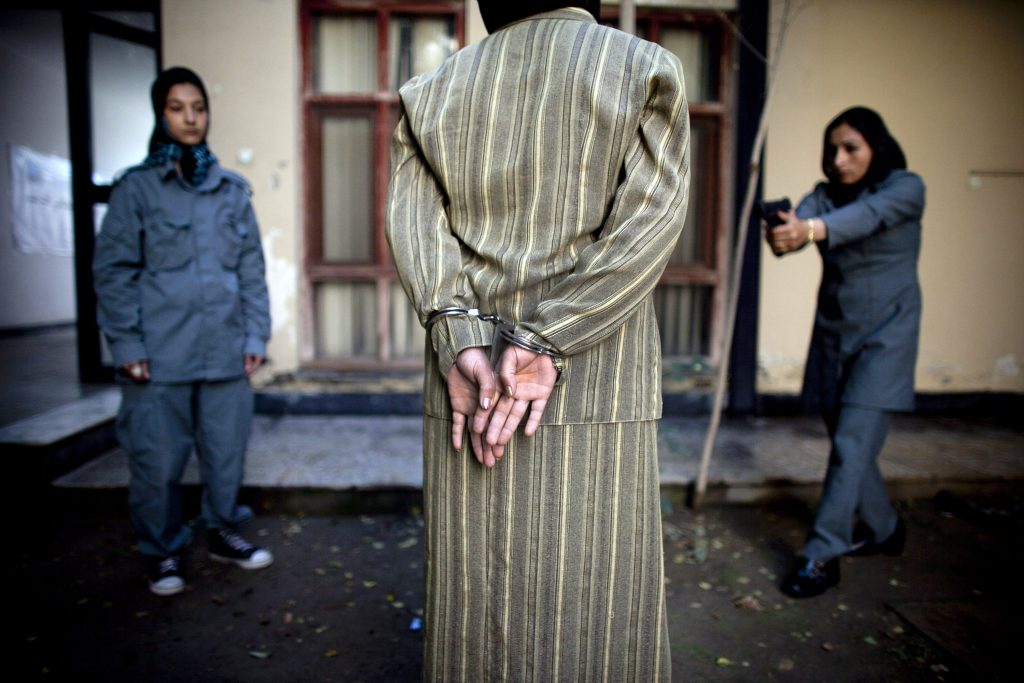
My interlocutors ascribed many different and occasionally contradictory identities to me in the field. To name a few: “Gezici” (meaning someone who supported the Gezi Park protests of 2013); CIA agent; sister with a headscarf; and perhaps the most amusing, “professor who looks like a terrorist.” My police interlocutors saw me as a terrorist-cum-professor because of the hooded military-green coat I wore during the freezing winters of Ankara. The coat resembled the distinctive look of popular leftist insurgent figures like Deniz Gezmis or Che Guevara.
Other than misidentifying me as CIA or Gezici, some people also thought that I was an undercover inspector appointed by the Directorate of Security, Ministry of Interior, or even Turkish president Recep Tayyip Erdogan himself. Other times, my commitment to study police was taken as a sign that I was a “child of a martyred police officer.” It is a common conversation-opener in Turkey to ask people about their families or personal lives, and I received a lot of questions like these. For example, when I mentioned my father’s unexpected death in one of these conversations without explicitly stating the real cause (a brain aneurysm), some thought that he was a martyred police officer. Other times, people thought that I was a plainclothes officer, especially during more than sixty house visits in which I accompanied police while they were doing “social projects” with civilians.
“I was always aware of the asymmetrical power relationship between state officials and ordinary citizens, since the former always held the institutional authority and right to punish.”
Despite the claims made about and by police reform projects, I was always aware of the asymmetrical power relationship between state officials and ordinary citizens, since the former always held the institutional authority and right to punish. Therefore, I paid utmost attention to minimizing such risks, especially when I observed police–citizen encounters. However, the questions of complicity were more complicated than I anticipated. No matter the ethical stance, police ethnography, in one way or another, has been a “dirty anthropology”—a term the anthropologist Beatrice Jauregui uses to describe ethically complicated research on police—and I found it was inevitable to witness some forms of violence either in the field or in the stories shared with me.
Nicole, many anthropologists do work on, in, and with communities with whom they sympathize. But what is it like to study people (like the police) we might not feel much sympathy for, but whom it is very important for us to understand? As anthropologists, we also value collaborating with, rather than merely studying, the people with whom we work. What happens when we are doing this with the police? I think researching the police poses such difficult questions and underlines the need to rethink the politics of engagement and alignment in anthropological research and writing.
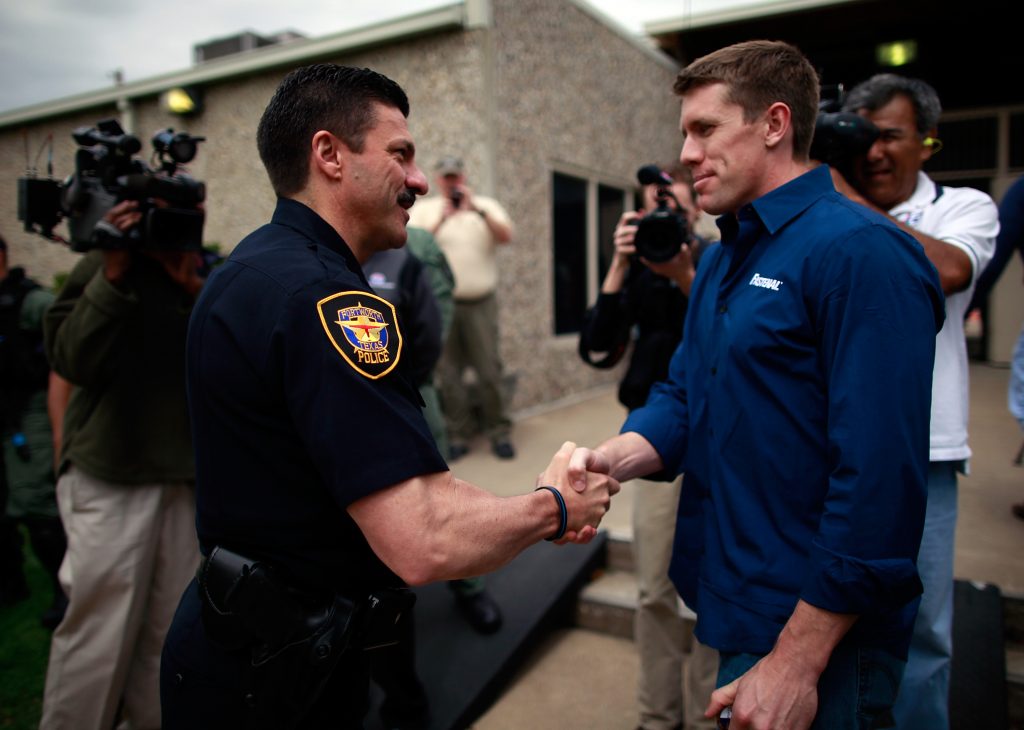
Nicole: These questions really resonate with me. In doing my dissertation work at the high school with the homeland security studies program, I often performed, and was treated as, a young, naive woman. School administrators and national security practitioners certainly never viewed me as an intellectual with serious critiques about their work. But it was partly because of this kind of underestimation that they welcomed me into their lifeworlds. Like you, I found myself mimicking masculinized national security cultures and vocabularies to fit in and feel safe.
But I was able to develop meaningful relationships with the teachers, administrators, and students at the school, as well as the security professionals they invited into the program. In fact, in leaving the field and writing my dissertation, I couldn’t help but feel as though I betrayed people who meant something to me by critiquing the work they did and its broader impact on society. Confronting my sense of ethnographic betrayal forced me to think more complexly about how to represent the school and those who labored there; a simple account could offer a damning political indictment of the school but lose the complexities of what made national security and policing so attractive to teachers and students. In other words, my relationships with participants clarified my responsibility to them: to tell a full account of the school, in all its complexities and contradictions.
Much of this changed, however, when I began “studying up”—a term in anthropology that refers to studying powerful people—by interviewing security professionals in positions of power and participating in security industry conferences and trainings. It sounds like the people you encountered had varying, and even conflicting, understandings of or assumptions about who you are—from the terrorist professor to “child of a martyred police officer”—that generated differing levels of suspicion. When I started studying countering violent extremism (CVE) programs from the perspective of their creators and practitioners, I began to experience more hostile exchanges with participants, which were certainly intermixed with masculinist overtures. For example, in one interview, the participant clearly viewed me as critical of his national security work; he took phone calls and talked to his office mate during our interview, which interrupted our conversation and directed his attention elsewhere. When I asked a critical question, he would then refer to me as “Dr. Nguyen,” dripping with derision. Since the security policy environment is small, potential participants who initially expressed interest in the study stopped responding to scheduling emails and phone calls. I noticed, however, when I mentioned that a former police officer held some of the same concerns I was raising, some participants responded more respectfully and took my questions more seriously. Trying to understand the change in tone, I asked this former police officer for his reading of the situation. I had thought race and class were affecting my exchanges with interlocutors. But the former officer said otherwise: “Law enforcement doesn’t respect the perspectives of anyone who hasn’t walked in their shoes.” Still, my status as a woman of color certainly defined my encounters with security professionals; so too did my lack of policing experience.
At the same time, the U.S. security state has recruited more and more people of color into its daily functions, meaning that many of my participants were Muslim, Arab, immigrant, or all of the above. In each research encounter, I needed to attend to these power relations, as even powerful people in powerful institutions are embedded in relations of force not of their own making, such as anti-Muslim racism. The sociologist Avery Gordon suggests using a lens of “complex personhood” to capture and consider the multidimensional identities of individuals and the social contexts in which they are embedded. In other words, I not only needed to account for how race organized the research encounter; I also needed to analyze how the history of anti-Muslim racism shaped how Muslim security professionals understood and carried out their work.
To advance our understanding of the police through ethnography, it’s essential that we, as researchers—and especially as women researchers—take more opportunities to publicly discuss the issues of power and ethics and strategies to negotiate them.
This report is part of “Transnational Trends in Citizenship: Authoritarianism and the Emerging Global Culture of Resistance,” a TCF project supported by the Carnegie Corporation of New York and the Open Society Foundations.
